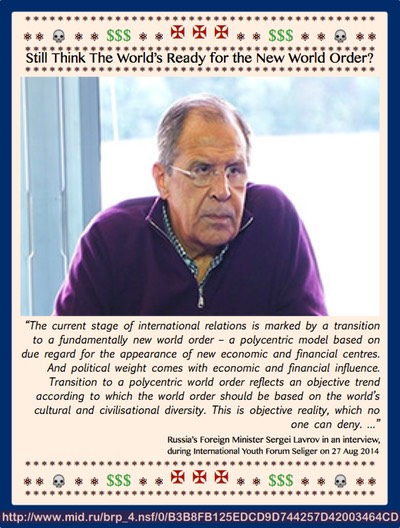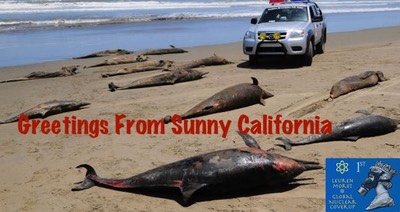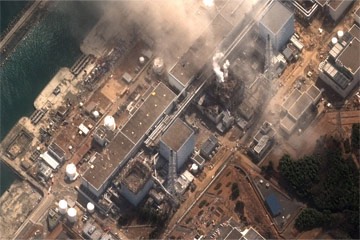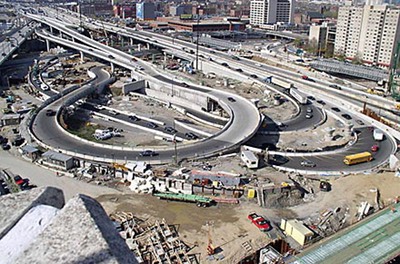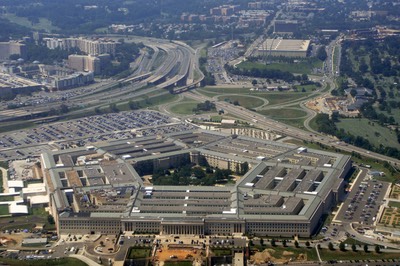Building the New Silk Road and New Eurasia: Part 2 - Russia and the North
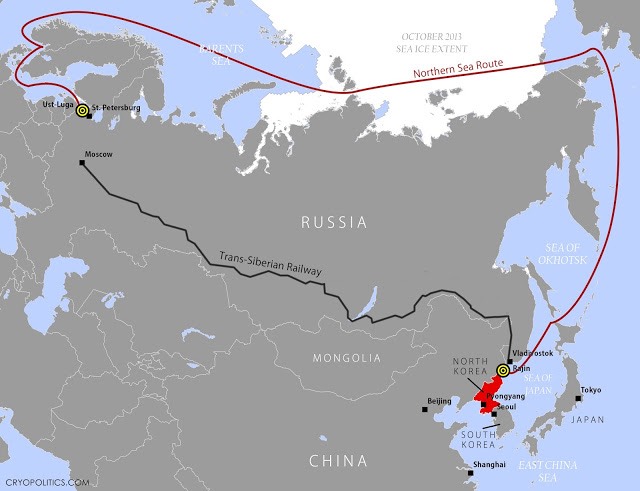
Economy | Eurasia | Far North | Germany | Japan | Korea | New Silk Road | Northern Sea Route | Russia
⚫️ December 9, 2015 ⚫️ yurasumy, PolitRussia ⚫️ Translated for Fort Russ by J. Arnoldski ⚫️
Continued from Part 1, “China and the South”
In the first part of this series dedicated to the trade routes between East Asia and Europe, the Southern sea route through which the vast majority of cargo between two hubs of the global economy flows was discussed. It was also shown how the leadership of China is trying to bring this strategically important sea route under its control.
In this second part, we will discuss one of the “alternatives” to this. It is unlikely that the northern sea route (NSR) will compete with the southern artery, but the development of the Far Northern region is inevitable for Russia. It is necessary from the point of view of state security, and therefore making it affordable for the country’s budget is very important.
Security
The melting of Arctic ice, a trend which has been followed for decades, as well as the development of technology (such as rocket science, for example) has resulted in the fact that the northern coast of the Russian Federation has become a convenient springboard for the deployment of Russian submarines. It is precisely here that patrols are settling into their designated places. It is here that they will be hunted by American nuclear submarines in order to protect their country from nuclear retaliation in the case of “rash” decisions.
Secondly, it is more likely that an attack on American strategic forces will be carried out via the north pole. As a minimum, there are at least two components (ICBMS’s and strategic bombers).
This region has been made very important even though mastering its defensive line has been difficult. Now, with the development of American submarines in the arctic seas (this is already a fact), the task of protecting the interests of the state has risen to a new level.
This article does not aim to examine in detail the threats to Russian security from the north. It’s simply necessary to understand that the development of infrastructural projects in the far north is not just a whim of some expectedly wealthy country, but a vital necessity for Russia. The task of any sane leadership is taking care of this necessity in a self-sustaining and income-generating way. Therefore, one should not be surprised by the efforts of the leadership of the Russian Federation in restoring the former power of the icebreaker fleet and projects that are currently developing in polar waters, as this is a matter of survival.
The defense of a state must be powerful, but economical.
The northern sea route - a history
The commercial exploitation of the NSR began in the times of the USSR. It was the Soviet government which gave the Arctic great importance and began comprehensively studying it for the immediate purpose of overcoming the economic devastation of the national economy. 1920-1930 was the “epoch” of the polar heroes. The Great Patriotic War became the first test of the “aptitude” of the northern fleet.
During the years of war, dozens of transport vehicles sustained the livelihoods in the coastal areas. Also, in the summer of 1942, 3 warships (the leader of destroyers, “Baku,” and two class 7 destroyers) were directed there from the Pacific ocean in one of the caravans.
Real work only began after the war with the emergence of a new icebreaker fleet, including nuclear ones. The first atomic icebreaker “Lenin” was put into operation in 1960. The first “Artika” serial nuclear-powered icebreakers became part of the fleet in the mid 1970’s, which dramatically increased the tonnage of cargo passing through the NSR. By the end of the 1980’s, the volume of traffic running through the NSR reached 6.7 million tons.
And this was only the internal “traffic” of the USSR. Until 1991, the passage of foreign vessels through the NSR wasn’t a reality.
But with the collapse of the USSR, the Northern sea route was quickly abandoned. Nuclear-powered icebreakers carried tourists and ships providing pilotage to vessels were written off or put aside for better times.
Cargo turnover fell to 1.4-1.6 million tons per year. There was nearly a decade of stagnation and decline, until the program for prioritizing the development of the NSR and the creation of international transport hubs was announced.
Putin said: “We see the future of the northern sea route as an international transport artery capable of competing with traditional maritime lines in terms of services, security, and quality.”
In 2010, only 110 thousand tons transited through the NSR. In 2012, transit traffic through the NSR reached 800 thousand tons. In 2013, it jumped to 1.36 million tons. In 2014, there was less than 300 thousand tons (this was affected by the general unloading of cargo traffic in the world and important economic changes which will be discussed below).
This is a drop in the ocean. For example, nearly one billion tons (963 million in 2014) in freight traffic flows through the Suez canal.
The overcall carriage of cargo through the NSR can be seen in this graph:
As we see, now the main freight traffic through the NSR is composed of loads for residents and construction sites in the Far North. The transit flow is not constant, and there are quite objective reasons for this.
Domestic Russian transport
The NSR was created as a domestic Soviet transport artery for the delivery of loads primarily for the needs of the region itself. Norilsk Nicket and the gas riches of Yamala all became possible thanks to work on the NSR. Only the further development of the region, the extraction of new natural resources, and the provision of acceptable living conditions to the population can guarantee a stable, working Northern sea route.
All of this makes its revival inevitable in the coming years. It is most likely that after 5 years the turnover of the NSR could break records (compared to the times of the USSR) and 7 million tons will rapidly move forward through it. The construction of two gas liquefaction plants itself will send 15 million tons of liquefied gas in both directions (East and West). At the same time, it will increase flows supplying new plants, the people working on them, etc. Thus, in the foreseeable future (10-15 years), even without taking into account hypothetical development projects in the Far North and the increase in transit from South-East Asia, the cargo traffic of the NSR is expected to grow massively and become self-sustaining.
Transit - problems and the paths to solutions
So why in 2014 did transit through the NSR plummet?
The Northern sea route is the shortest route between major Chinese, Japanese, and Korean ports and ports in Northern Europe (Hamburg and Rotterdam). From Yokohama, Japan and Busan, South Korea, it is up to 4000-5000 miles.
If we add to this consideration the cost of transit through the Suez canal ($5 per ton), then the economic effect of passing vessels through the NSR is obvious, but there are a few “buts.”
Piloting vessels through the NSR costs a tariff of $20-30 per ton. Is that a lot or a little? As calculations show, it can take up to half of the expenses of the shipowner for the voyage. When oil prices were high (around $100 a barrel), a profit could be made. With plummeting oil prices, and thereby less spending, the interest of foreign ship owners in using the NSR drastically fell. Saving 10-15 days attracted few then.
There are many other problems which are smaller for foreigners (unequipped ports and the legal aspects of passing ships through), but economics have always been central. As long as the NSR is economically advantageous, then it will be in demand. If it is unprofitable, then no extra bread will attract a foreigner there.
In general, ports in the north are a weak point of the entire project and require a separate description.
Conclusion
The main conclusion rests in that the NSR will never be able to become a substitute for the southern route, but with a reduction in tariffs for pilotage or a rise in oil prices (at least to the level of $70-80 per barrel), it will be able to take upon itself a sufficient volume of cargo (up to 30 million tons) and ensure the profitability of the entire project. In fact, this is precisely what is required. This will give the Russian Far North an impulse in development, provide defense capability, and make shipping costs affordable, which would have the most favorable impact on the economy of whole country.
“The Great ‘Silk Road’ of the 21st Century. Part 2”
⚫️ http://fortruss.blogspot.com/2015/12/building-new-silk-road-and-new-eurasia_9.html ⚫️ http://politrussia.com/ekonomika/stanet-li-severnyy-259/ ⚫️
Visitors to LM:GNC
Leuren Moret: Global Nuclear Coverup
- ❁ Currents
- ⚛ Radiation Omnicide 👥
- 🎥 UC, Davis, Katehi, Illuminati ✠
- 🌎✟☦ One World Religion 🎭
- ♞ Atlanticists v. Putin et al ⚪️
- ✈️ 3 NWO False Flags Connected ➷
- 🔪Ukrainian ✠ Wikileaks 👀 Interview 🎥
- 🚫 Out of Eurasia 🚫
- 💀 Jade Helm, International Implications, NWO Rollouts ⏰
- 🌿 Essential Oils, Nutrition, Frequencies & Health 🌺
- 🎯 R.F.D.E. | H.A.A.R.P. | N.L.P. ⚡️
- ⚛ Leuren Moret: Hiroshima, Nagasaki, Fukushima ⚛
- ❦ Moret & Battis: Jade Helm ❦
- 🌎 New World Order America 🇺🇸
- ⨳ Geopolitics Ukraine | E.U. Judo 🌍
- 👥 Template: Jade Helm
- ✠ America’s Domestic Pacification ✠
- ♨️ Chernobyl, Zaporozhye, Blackmail ⚛
- 💉 REBRANDING DISASTER🔪
- 👤 Eurasian Enigma Arises
- 🔴 Donetsk Nuclear Explosion ⚫️
- 🌍 21st Century Silk Road 🌏
- 🌍 Silk Road Strategies 🌐
- 🌍 21st Century Silk Road PT1 🌏
- 🌍 21st Century Silk Road PT2 🌏
- 🌍 21st Century Silk Road PT3 🌏
- 🌍 Africa ☗
- ♞ Balkans, The Nameless Triangle
- 🌏 China 🌝
- 🌍 Eurasia 🔴
- 💣 Israel: Out of Erupt!
- ✠ Jesuits/Templar’s Origins & Aims
- 👺 SOROS ✠ NWO 📚 Hacked ✍
- ➴ Pyatt’s ✠ SOROS ♞ Breakfast 🍳
- Breedlove, GOOD RIDDANCE
- 🎱 Obama’s $3 Billion Eurocon 💸
- 🌍 A Psychopath’s Psychopath ✠
- 🔫 Global Hit Squad 💣
- 💀 Neo-Capitalist’s Slave Trade 💰
- 🇺🇸 Bio: Undermine Control
- ↷ Fine Evening For A Minuet ↶
- ✠ Slavery, Then & Now
- 💣 JCS Operation Northwoods
- ✠ The Three Secret Meetings
- Korea Yeonhee (연희) Nuclear Kabuki Theatre
- 🌍 Middle East 💣
- 💣 ISIL: Battered, Retreating 💀
- 🔥 Turkish Coup Attempt 💣
- ⚑ Muslim Brotherhood and ISIS ⚫️
- 🔫💰💉Daesh Terrorist Multi-Tool🔪💣💊
- 🚧 US and Turkey, NWO the Kurds 💸
- ✠ Hitler Bragged on Jesuits ✠
- 🍞 Their Daily Bread & Rubble 💣
- 🔪“Erdogan is Strengthening ISIS”💣
- 🇫🇷 Russia Reveals ISIS’ Money 💰💰
- "Raqqa's Rockefellers” ISIS Full Frontal
- ☞ Smashing Turkey’s Game❌
- 🌍 Juncker | E.U. | Direction ⤣
- 🔪 GLADIO Wolf Kills Russian Pilot ✈︎
- ✈︎ Washington’s SU-24 🎯
- 🌐 Turkey, NATO, War Crime? 🔎
- ➷ 449-Down, ISIL to Go 💣
- 🌎 North America 🔥✠
- 🇷🇺 Russia 🇷🇺
- 🇷🇺 PUTIN OVERHAULS KREMLIN 🏰
- ☛ Who Created ISIS ☚
- 🍳 Food Supply Compromised 🎱
- 🌍 Putin re Ceasefire Syria 🌐
- 👤 Cold War Re-Run 👀
- 🌐 Minsk 101 | Theatre of the Absurd 🌍
- 🌐 Geopolitical Original Sin 🌍
- ♘ Russian Troops | Turkish Border ♘
- 📚 Educating Charlie Rose 🔑
- 🌍 Lavrov's Munich Speech
- 🎱 US Embassy Media Fail 🎭
- ✠ ♛🃏 Putin’s Jar Of Spiders
- 🎱 MOSSAD’S ON THE DOORSTEP 💣
- 📄 This Document is Dynamite 📄
- ♔ The Golden Trap
- ❁ Russian Fusion-Fission
- ❁ Putin’s 7-Point Plan
- ❁ Russian Position Speech
- ✈︎ Ukraine, MH-17, Jesuits Flagged! BRICS Undermined?
- ⏰ Ukraine? 🔥 Bail Out! ✈️
- 💦👤 Psychotropic Zombification ☔️
- 💣 Odessa Trade Union Murders 🔥
- 🃏 Nothing Personal, Just Business 💰
- 💉 BioWeapons for Depopulation 💀
- ⚛ Nuclear Coverup Ukraine | Mines of Zholti Vody 💀
- 🔥 Unsustainable Ukraine 👥
- ☗ ASHES TO ASHES 💀
- 🔪Ukrainian Wikileaks 👀
- ☞ Dispatches From the Front 🔫
- 💣 The Ukrainian Failed State 🌍
- 🔑 Our Decisions Define Us🔑
- ✠ Child Abuse 💀
- 💣 Mozgovoi’s Murder 🔪
- 🎱 Yatsenyuk's Russian Threat 🔮
- ||| Prison Ukraine |||
- ✍ CyberBerkut Reports 👥
- ♨️ Crazy Arseniy’s -USED- Ukraine Fire Sale! ♨️
- ✝ AZOV CRUCIFIXION ✝
- 👤 Eyewitness Debaltsevo Cauldron 💀
- ✍ Historic Slaviansk Doctor Interviewed
- 💀 The Tragedy of Uglegorsk
- ♟ Jan. 2015 Minsk Fail 🃏
- ➷ Tochka Found, Debaltsevo Locked
- 🌍 World Facing Second Chernobyl
- ✈︎ MH-17 AND THE Jesuit Minuet
- ✈︎ MH-17, Jesuits Flagged!, Video
- 💀 Death’s Drummers
- 👤 DPR! Novorossiya Calling
- 💀 Ukraine’s Chernobyl Armor
- 🎱 Gas to Ukraine Blocked
- ❁ Global Nuclear Theatre: Donbass
- ✠ GHOSTS of the 51st BRIGADE
- ❁ Novorossiya: Strelkov Briefing
- 👤 Open Letter to President Putin
- ✈︎ MH-17 Dutch Interim Report
- 💣 Surrendering UA Murdered by Punatives
- ♟ Mutiny of the Euro-Integrators ♟
- ➹ View from Ukraine Operating Room
- ❁ Ukraine’s Violent Escalation
- ❁ Ukrainian Soldier’s Cry for Help
- ⧱ Occupied Ukraine ⧱
- ❁ US State's Nuland Directs Ukrainian Coup
- 📯 Ukraine Deputies Knew Before Maidan
- ❁ Health In 2015
- 💉 Vaccines 💀
- 🎥 Geopolitics, Jesuits & History
- 🎥 Rebranded ✠ The Jesuits ✠
- ⚛ Zaporhyze Nuclear Events & Geopolitics
- ❁ Fukushima Polar Vortex Radiation ❁
- 💀 Embrace, Enfold, Extinguish
- ✈︎ Fear of Flying . . . (1of4)
- ❁ Fukushima: Impact of Fallout On Oceans (Pt.1)
- ❁ Fukushima: Impact of Fallout On Oceans (Pt. 2)
- ❁ North America, Middle East and Fukushima
- ❁ DHS/Napolitano Berkeley Template
- ❁ Fukushima Radiation, Ecocide & Tesla Technology
- ✈︎ Flight 370 Downing
- ✈︎ MH370: The Follow-Up
- ❁ Domestic Radiation Issues
- ❁ Fukushima: Hawaii, Pacific Is. - Unsafe
- ⚛ Fukushima Reactors, Breakdown 1-6 ⚛
- 🌏 International Sites Featuring LM:GNC
- ❁ On To Mongolia 🎥
- 🎥 LKM On Fairdinkum Media 🎥
- ❁ Editorial Page
- ❁ Conversations 📬
- ❁ Waves
- ⚛ Radiation Around The Nation 🌎
- ⚛ Your Radiation #73/74, Sep 10 - 24, 2016 🌎
- ⚛ Your Radiation #71/72, Aug 27 - Sep 10, 2016 🌎
- ⚛ Your Radiation #69/70, July 30 - August 13, 2016 🌎
- ⚛ Your Radiation #67/8,--July 16-30, 2016 🌎
- ⚛ Your Radiation #65-6,--July 2-16, 2016 🌎
- ⚛ Your Radiation #64, July 2-9, 2016 🌎
- ⚛ Your Radiation #62-3, June 18 - July 2, 2016 🌎
- ⚛ Your Radiation #61, June 11-18, 2016 🌎
- ⚛ Your Radiation #60, June 4-11, 2016 🌎
- ⚛ Your Radiation #59, May 28 - June 4, 2016 🌎
- ⚛ Your Radiation #58, May 21-28, 2016 🌎
- ⚛ Your Radiation #57, May 14-21, 2016 🌎
- ⚛ Your Radiation #56, May 7-14, 2016 🌎
- ⚛ Your Radiation #55, Apr 30 - May 7, 2016 🌎
- ⚛ Your Radiation #54, Apr 23-30, 2016 🌎
- ⚛ Your Radiation #53, Apr 16-23, 2016 🌎
- ⚛ Your Radiation #52, Apr 9-16, 2016 🌎
- ⚛ Your Radiation #51, Apr 2-9, 2016 🌎
- ⚛ Your Radiation #47-50, Mar 5 - Apr 2, 2016 🌎
- ⚛ Your Radiation #46, Feb 27-Mar 5, 2016 🌎
- ⚛ Your Radiation #45, Feb 20-27, 2016 🌎
- ⚛ Your Radiation #44, Feb 13-20, 2016 🌎
- ⚛ Your Radiation #43, Feb 6-13, 2016 🌎
- ⚛ Your Radiation #42, Jan 30 - Feb 6, 2016 🌎
- ⚛ Your Radiation #41, Jan 23-30, 2016 🌎
- ⚛ Your Radiation #40, Jan 16-23, 2016 🌎
- ⚛ Your Radiation #39, Jan 9-16, 2016 🌎
- ⚛ Your Radiation #38, Jan 2-9, 2016 🌎
- ⚛ Your Radiation #37, Dec 26 - Jan 2, 2015|16 🌎
- ⚛ Your Radiation #36, Dec 19-26, 2015 🌎
- ⚛ Your Radiation #35, Dec 12-19, 2015 🌎
- ⚛ Your Radiation #34, Dec 5-12, 2015 🌎
- ⚛ Your Radiation #33, Nov 28 - Dec 5, 2015 🌎
- ⚛ Your Radiation #32, Nov 21-28, 2015 🌎
- ⚛ Your Radiation #31, Nov 14-21, 2015 🌎
- ⚛ Your Radiation #30, Nov 7-14, 2015 🌎
- ⚛ Your Radiation #29, Oct 31 - Nov 7, 2015 🌎
- ⚛ Your Radiation #28, Oct 24-31, 2015 🌎
- ⚛ Your Radiation #27, Oct 17-24, 2015 🌎
- ⚛ Your Radiation #26, Oct 10-17, 2015 🌎
- ⚛ Your Radiation #25, Oct 3-10, 2015 🌎
- ⚛ Your Radiation #24, Sep 26 - Oct 2, 2015 🌎
- ⚛ Your Radiation #23, Sep 19-26, 2015 🌎
- ⚛ Your Radiation #22, Sep 12-19, 2015 🌎
- ⚛ Your Radiation #21, Sep 5-12, 2015 🌎
- ⚛ Your Radiation #20, Aug 29 -Sep 5, 2015 🌎
- ⚛ Your Radiation #19, Aug 22-29, 2015 🌎
- ⚛ Your Radiation #18, Aug 15-22, 2015 🌎
- ⚛ Your Radiation #17, Aug 8-15, 2015 🌎
- ⚛ Your Radiation, August 1-8, 2015 🌎
- ⚛ Your Radiation, July 24-31, 2015 🌎
- ⚛ Your Radiation, June 26 - July 24, 2015 🌎
- ⚛ Your Radiation, June 19-26, 2015 🌎
- ⚛ Your Radiation, June 12-19, 2015 🌏
- ⚛ Your Radiation, June 5-12, 2015 🌎
- ⚛ Your Radiation, May 29 - June 5, 2015 🌎
- ⚛ Your Radiation, May 22-29, 2015 🌎
- ⚛ Your Radiation, May 15-22, 2015 🌎
- ⚛ Your Radiation, May 8-15, 2015 🌎
- ⚛ Your Radiation, May 2-8, 2015 🌎
- ⚛ Your Radiation, April 24 - May 1, 2015 🌎
- ⚛ Your Radiation, April 17-24, 2015 🌎
- ⚛ Your Radiation, April 9-16, 2015 🌎
- 🔥 Fire at Oak Ridge 💥
- 💥 NANOWEAPONRY 💥
- 🐄 Radioactive Cattle Teeth, Fukushima 🏭
- 📰 WikiLeaks 🔎 NSA and More 🔦
- ✨Nano ‘Hall of Mirrors’⚡️
- ⚛ 💀 ⚛ into the Hudson River 🌎
- 🚿 Flint, Metropolitan Eugenics 💀
- 🌍 Existential Threat? ☛NATO☚
- 💉 Gates, Poroshenko; Conspiracy, Government 🎯
- 💉 Gates-Poroshenko ZPG Ukraine 💀
- 💀 Paris Massacre Perpetrators 👤
- 🔪 Delgado, Mind Control ♟
- 🌎 MOST NUKED NATION ON EARTH 🌎
- 🎯 Radio Frequency Directed Energy 🎯
- ⚛ Please, Don’t Pick the Mutants 🌻
- ⨳👤⨳ Space-Based Weapons Ban
- √ Saudi OP Strategy Success
- ♨️ Gallery ♨️ Chernobyl Fire ♨️ 2015 ♨️
- 🌍 Monsanto Backdoors E.U.
- 🎉 Crimea’s 1st Anniversary Album 🎉
- 🌏 21st Century Eschalon
- 📰 International Headline Watch 🌏
- ✄ Prouty Place ✑ CUT THE BULL ✂︎
- 🌏 How To Wreck The Environment
- 🇯🇵 Plutonium Isotopes Off Japan
- 🌍 Depopulation Agenda: Europe 👤
- 🔪💉Cease Covert Depopulation Letter🔪💉
- ❁ Dutch Apologize for MH-17 Lies
- ❁ Pacific Dead from Fukushima
- ❁ Strange Fish Story
- ❁ Blood Composition of Monkeys Altered Near Fukushima
- ❁ Secret Army Bases
- ⚛ Fukushima Plutonium Effect ⚛
- ➷ RAND Demographic Military Power ➷
- ⚛ Depleted Uranium | DNA Damage ⚛
- ❁ Hidden Genocide: by Dr. Ernest Sternglass
- ❁ Space Preservation Act of 2001
- ❁ 1972 Rothschild Ball
- ❁ Unsafe Radwaste Disposal
- ♆ Fallout and Reproduction of Ocean Fish Populations
- ⚛ Radiation Around The Nation 🌎
- ❁ Lifestyle
- ❁ Archive
- ⚛ 61 Years of Omnicide ⚛
- 📻 Nanoparticle Toxicity with Leuren Moret ❦
- ❁ New Bombs and War Crimes in Fallujah
- ❁ Global Climate Change . . .
- ⚛ International Radiation Distribution ⚛
- 💀 Depleted Uranium’n’DNA 😱
- ❁ UC Regents Lose Nuke Pgm
- ❁ DU-Trojan Horse
- ❁ LM:GNC (Pt1)
- ❁ LM:GNC (Pt2)
- ❁ World Uranium Weapons Conference 2003
- ⚛ Radionuclide ReMobilization Abatement
- ❁ "America First" Transcription
- ❁ "Whale Archive" Transcription
- ⚛ ⚛ ⚛ Location, Leuren Moret: Global Nuclear Coverup ⚛ ⚛ ⚛
- ❁ Glossary
- ❁ Contact
💸LM:GNC 20151210 ✈︎

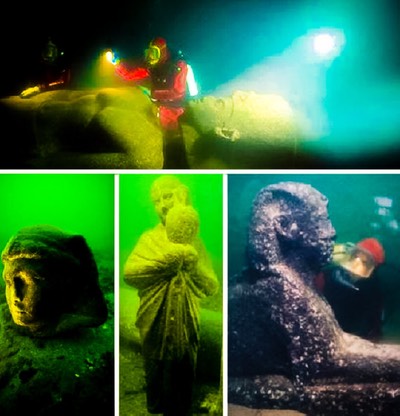


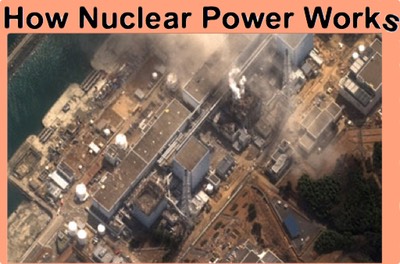
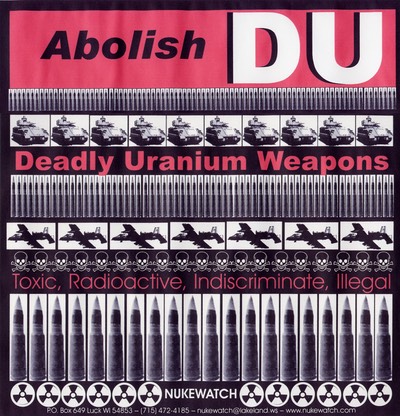


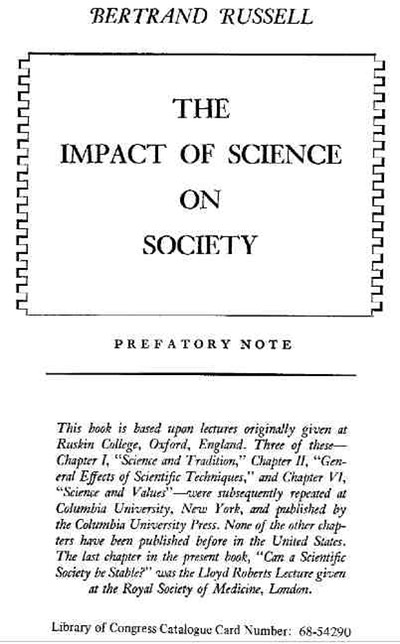

![20120724 - 7-24-2012 The More We Learn - quote from David Rockfeller -_thumb[2]](../../_Media/20120724---7-24-2012-the_med_hr.jpeg)
